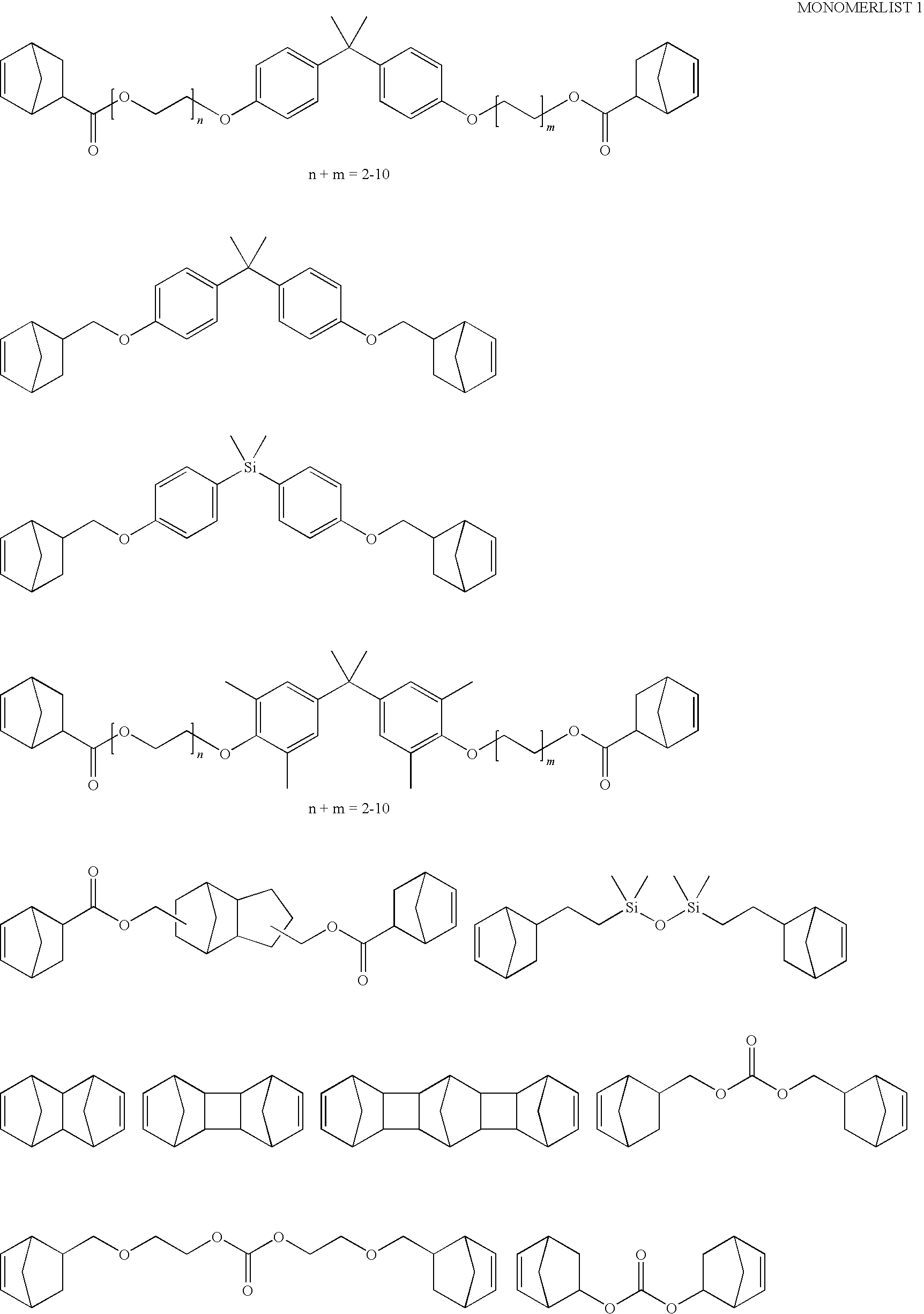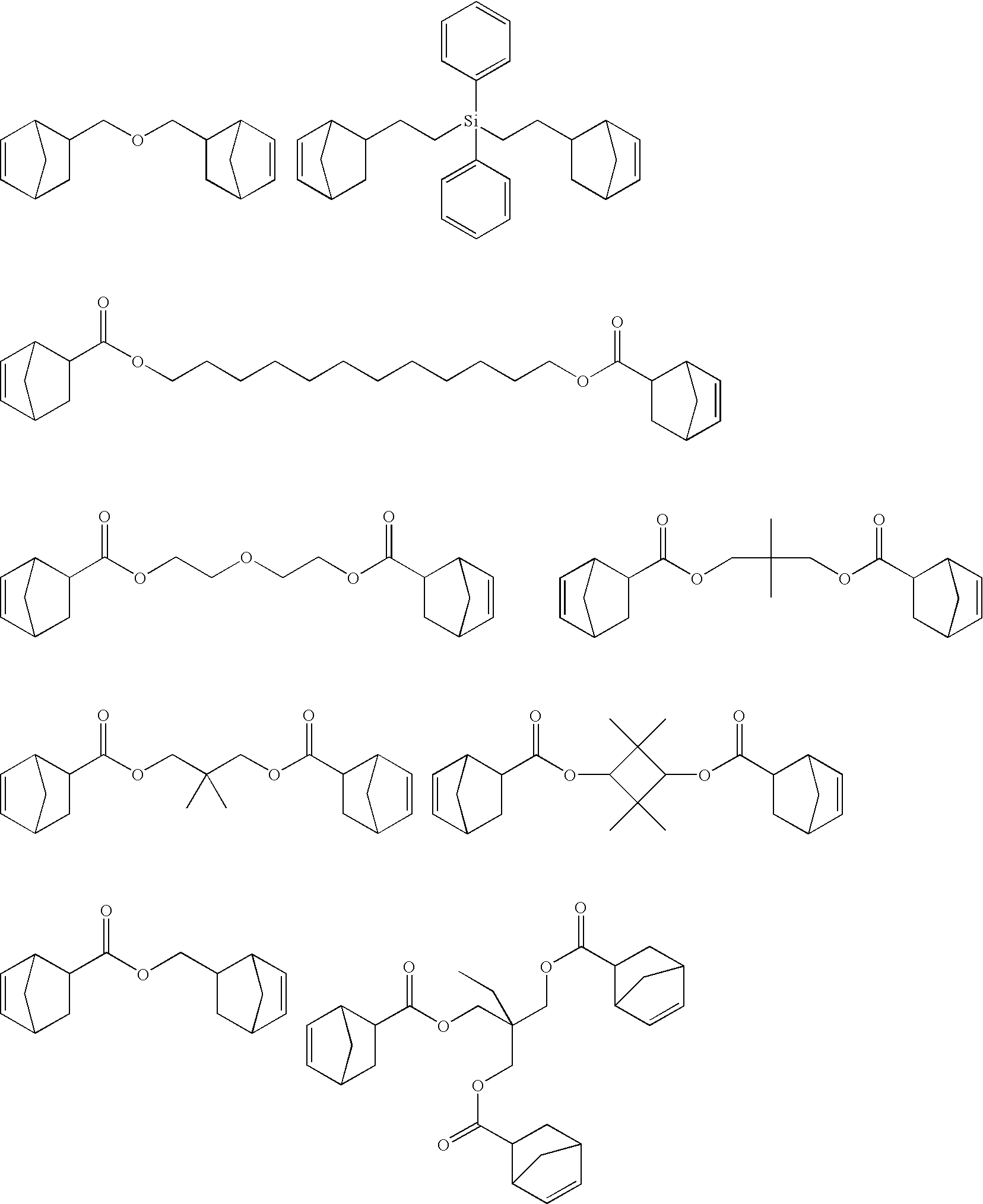Solid materials obtainable by ring-opening metathesis polymerization
a technology of metathesis and solid materials, applied in the field of precured compositions, can solve the problems of high internal stress of materials, unsatisfactory high shrinkage of specimens, and limited reduction of initiator amoun
- Summary
- Abstract
- Description
- Claims
- Application Information
AI Technical Summary
Benefits of technology
Problems solved by technology
Method used
Image
Examples
example
[0114]
Compound 1:1.6 g Monomer:2.0.017 g Initiator:3.15 g Filler:Quarts (Median: 0.7 μm)silanized with 6 wt.-%
[0115]Preparation of the paste: The monomer, initiator and filler were mixed into a paste with a Speed Mixer™ DAC 150 FVZ (Hauschild Engineering), the conditions used were 2200 rpm for 3 minutes, 3 times. The paste was allowed to cool to room temperature before each mixing time.
[0116]Flexural strengths and Youngs's modulus were tested according to ISO 4049:2000.
[0117]Determination of L*a*b-values were made with a HunterLab Scan-2 (Hunterlab, Va., USA).
[0118]The results obtained after tempering the cured compounds are described in the following tables.
[0119]A specimen was regarded as having fulfilled the test for a certain parameter, if the following values were met or exceeded:
Flexural strength:>155MPaYoungs' Modulus:>9200L-value:>68a-value:b-value:
TABLE 1Tempering time and temperature2 h4 h8 h16 h24 h130° C.130° C.130° C.130° C.130° C.Flexural strength[MPa]−++−−Youngs' Modu...
PUM
| Property | Measurement | Unit |
|---|---|---|
| temperature | aaaaa | aaaaa |
| temperature | aaaaa | aaaaa |
| temperature | aaaaa | aaaaa |
Abstract
Description
Claims
Application Information
 Login to View More
Login to View More - R&D
- Intellectual Property
- Life Sciences
- Materials
- Tech Scout
- Unparalleled Data Quality
- Higher Quality Content
- 60% Fewer Hallucinations
Browse by: Latest US Patents, China's latest patents, Technical Efficacy Thesaurus, Application Domain, Technology Topic, Popular Technical Reports.
© 2025 PatSnap. All rights reserved.Legal|Privacy policy|Modern Slavery Act Transparency Statement|Sitemap|About US| Contact US: help@patsnap.com



